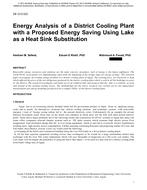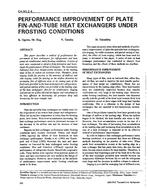Click here to purchase
For both newly built and renovated nearly zero energy buildings, installing photo-voltaic (PV) panels on building façades vertically is a growing trend. To develop reasonably priced and aesthetically satisfying energy activated façades, adding flexible PV (FPV) panels to traditional external thermal insulation composite system ETICS façades is under consideration. To prevent the FPV from overheating, phase change material (PCM) granules, encapsulated in the thick layer of mortar, were installed behind the FPV. As FPV is vapor tight, it is necessary to allow the moisture to dry out behind the FPV and to prevent frost damage of the moist PCM mortar. A full scale test wall was built in a climate chamber with three versions of energy activated ETICS sections with traditional ETICS separating them. Also, a PCM mortar composite was investigated in small-scale experiments to calibrate the soil moisture sensors used for measuring moisture content in the overhygroscopic range. Measured results from the climate chamber were compared with hygrothermal model calculation results. The function for calibrating the soil moisture sensors to measure moisture content in PCM mortar was defined, as well as formulas to eliminate the temperature error caused by specifics of the sensor. A double steel sheet joint solution was developed to make it possible for excess moisture to dry out behind the vapor-tight PV panel. It turned out that 12 days at room temperature was enough for 35 mm (1-3/8″) thick mortar with PCM granules to dry out enough to cover it with a PV panel. Hygrothermal modelling showed a similar drying out process with several candidate materials.
Product Details
- Published:
- 2022
- Number of Pages:
- 8
- Units of Measure:
- Dual
- Product Code(s):
- DBldgsXV-C084


